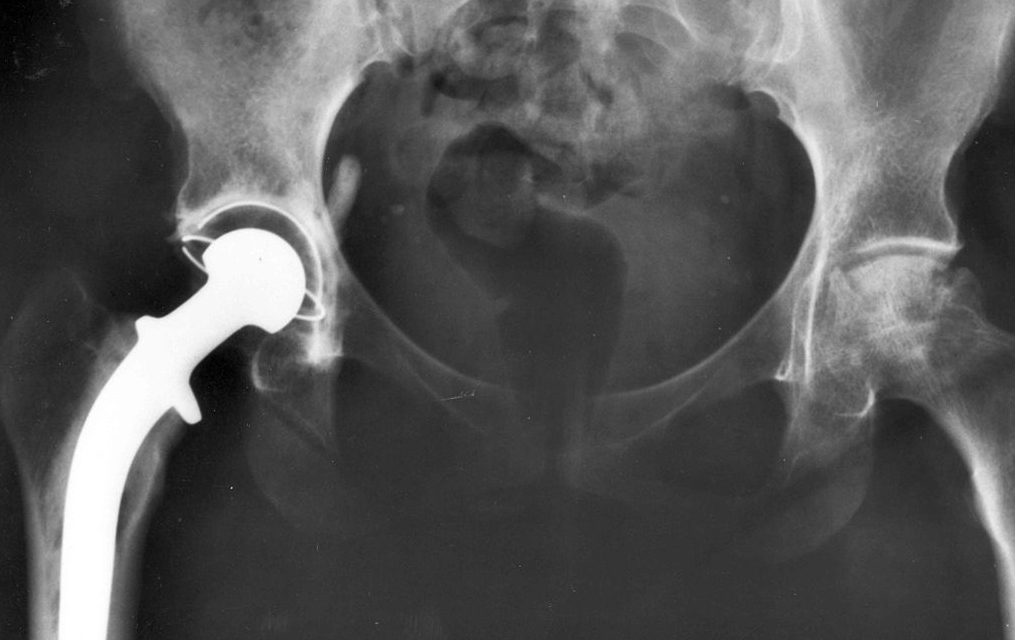Photo courtesy of Wikimedia Commons.
I spent my life teaching actuarial science at a university. As a result, I calculated lots of numbers: averages, expected values, variances. But, they were only numbers. What I didn’t see was the individual human story behind each calculation.
But now that I am the human face within one these distributions, I see it all in a different light. The distribution I am now studying is the wide variability of Canadian healthcare delivery relevant to hip replacements.
Some background: I entered the official hip replacement list in Victoria, BC, on July 23, 2014, about a year ago. I was told to expect a wait time of 12 to 18 months. But was that good or bad? Was it necessary? I investigated.
Data show that for hip replacements, BC has the second longest wait times in Canada with a median value of 70 weeks. But that is a median value which means about half of all patients wait longer. That is twice the wait time in Ontario, which is actually the third best province in Canada according to recent Canadian Institute for Health Information (CIHI) statistics.
So, I waited and the hip deteriorated until pain-killers seemed useless.
Finally, just short of a year, I got a call on June 10 to say that my hip surgery was scheduled for July 15, or week 51. I fought back tears of relief. It almost made me forget the absence of a vital life during the weeks I had waited.
What happened next knocked the wind out of my sails.
One week before my scheduled operation I was told that I had been bumped for a situation that presented a “higher level of urgency.” They had just added almost eight weeks to my wait time for reasons that were opaque, at best, and without logic to me. Why did this happen? In the end, I got no real answers, only rumours about parental leave (nothing sudden or unforeseen about that) and other factors that may or may not have been part of the equation.
So, beyond my personal experience, the real question is: “Are Canadian wait times for hip replacement justified or could they be shortened?”
Turns out, the variability within Canada’s health care system is wide, and does not just exist across provincial borders. In most provinces, wait times vary significantly from city to city, region to region, hospital to hospital and doctor to doctor.
The evidence tells us that having a “private” alternative actually makes wait times in publicly-funded healthcare facilities worse. So that is not the solution.
One of the problems in answering this question is a lack of province-wide databases in many jurisdictions. Such databases would help minimize wait times because patients from a busy facility in one region within a province could be transferred to other facilities (or surgeons) with shorter waiting lists.
Today, in most provinces, doctors and specialists work in silos and there is no real overarching management of the system.
Healthcare decision-making in Canada is largely decentralized with few standardized measures of “success.” One doctor can have wait times measurably better or worse than the next and the system cannot be expected to respond well by moving individual patients. The only real leverage many provincial Ministries impose is to incent desired behaviour through macro-budgets.
We need more integrated management and measurement in the system – if not country-wide, then at least province-wide.
Alberta is a good model. Most recent data show that providing incentives tied to provincial benchmarks based on a standardized care path has created savings of almost 12,600 hospital bed-days (and $13 million) annually. The incentive? The non-monetary savings in resources are pumped back into hip and knee replacement services where the medical teams see the impact of their success first-hand, rather than disappearing back into the system as a whole.
Alberta now meets CIHI benchmarks for hip replacements 87 percent of the time versus a 67 per cent success rate in BC. In fact, for 90 per cent of its hip replacement patients, Alberta now meets maximum wait-time limit criterion of 14 weeks. Note that providing financial compensation is not necessarily the primary motivating factor.
Canadians consistently show strong support for their health care system. However, wait times continue to drag the outcomes down. We can shorten wait times, but it will take political courage. Let’s hope that courage can be found.

